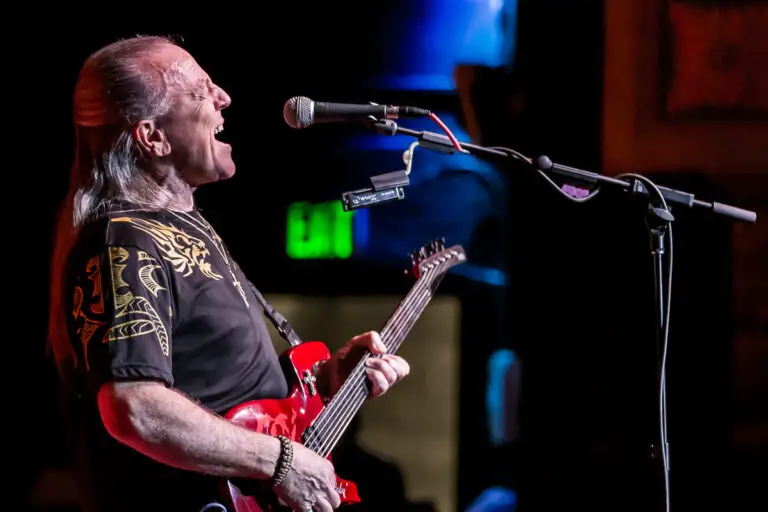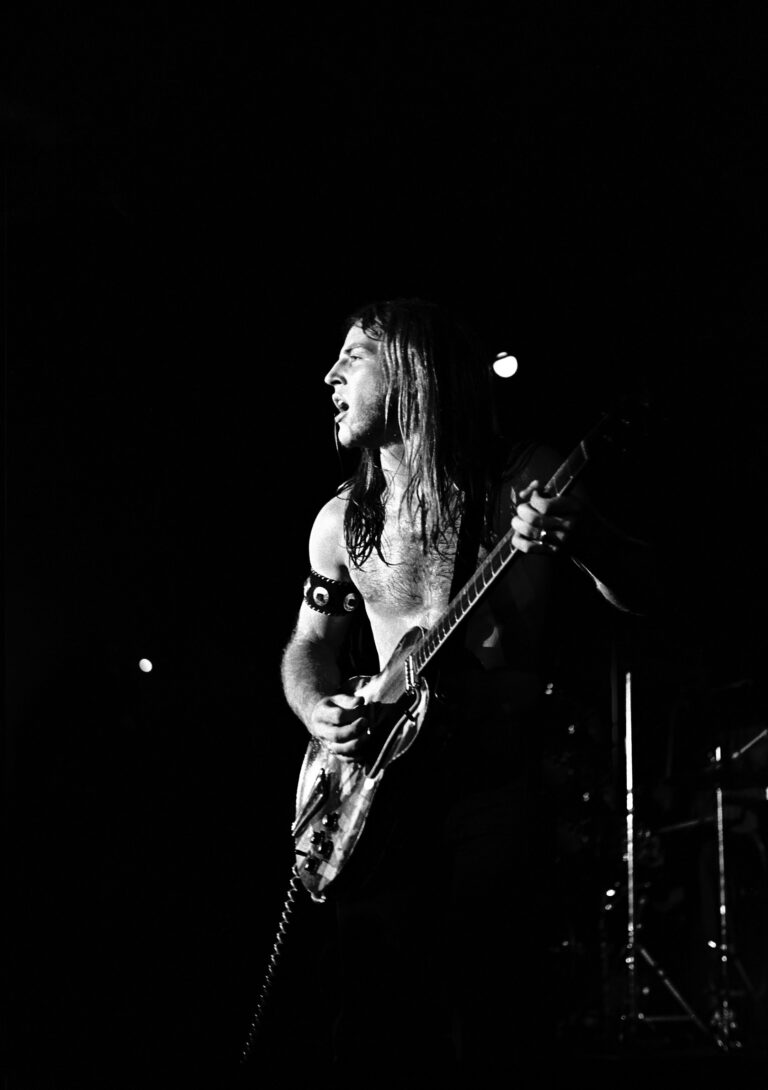When I was growing up in the early 70’s, a hazy time captured in Richard Linklater’s movie Dazed & Confused, we were very, very serious about our music. As hyper-hormonal, aspiring teenage guitar heroes in middle-class Queens, we had an especially deep allegiance to one particularly muscular strand of music – the power trio.
Many an argument and more than a few fist fights erupted as we debated which threesome was ultimo. We weighted our own preferences with those of the critics at the major music weeklies like Rolling Stone and Hit Parader. These were the opinions of purported wiser men, ones that we consumed with blind Biblical fervor. They were words of praise, and just as often snark, that had a big and, in the cases like the below, misguided in hindsight influence on our views.

Was it Cream, the Jimi Hendrix Experience or the guitar-less ELP who were the best rock trio? Maybe it was Rush, Blue Cheer, The James Gang or Beck, Bogert and Appice? Or was it those rock quartets that were essentially three-piece instrumental bands, if you didn’t count their peacock strutting, axe-less singers – Led Zeppelin, The Who or Black Sabbath?
By 1970-71, with the demise of Cream and the death of Hendrix, and from a strict fan popularity sense, it was Grand Funk Railroad.
Grand Funk were a prime exponent of high energy, no nonsense “Rust Belt Rock.” It was a hard rockin’ trio that roared out of Flint, Michigan with a powerhouse drummer with a hot air balloon-sized Afro (Don Brewer) and a bassist who made you dizzy by incessantly sliding up and down the neck of his axe into his riffs (Mel Schacher). Then there was the lead singer/guitarist/principal songwriter, Mark Farner. He was a Mexican jumping bean of a man who proudly showcased his slim Cherokee heritage by striding the stage shirtless and with ass length locks, just like Geronimo.
Grand Funk had the fortune and misfortune of being managed by Terry Knight, the quintessential shifty Svengali who did all the talking for them and, ultimately, made off with their royalties, song publishing and oil well investments.
A few short months after forming, Grand Funk broke out nationally with three show-stealing sets secured by Knight at the Atlanta Pop Festival in 1969. By the end of the year, they would hit gold record status twice –with their debut disc, On Time, and the self-title “red” album.
And just like Led Zeppelin and Black Sabbath, the wisenheimer critics at Rolling Stone and other magazines hated them… as much as millions of fans loved them.

And while the band was of Midwestern origin, many of the most memorable moments of their early career unfolded in New York City, beginning with several shows in 1969 at the Fillmore East and their debut at Madison Square Garden in December 1970.
“We always really loved the New York audiences,” says Farner. “They were always super enthusiastic and would send us waves of emotion as we played. It made New York City the site of some of our biggest and best gigs.”
With the release of their third album in 1970, Closer to Home, manager Knight and Grand Funk would do what no other band before them had – purchase a street-long billboard in Times Square.
“Terry spent $100,000 of our money on that sign,” says Farner. “Mel Schacher and I went down there in a cab, walked around the corner and were stunned by what we saw. This was a time before cellphones, so we took a picture with our eyes. We had only purchased it for a month but got lucky when the billboard workers went on strike. It stayed up there for four months total and probably helped sell a lot of albums.”
Another New York apex took place when Grand Funk returned to the Big Apple to play Shea Stadium on July 9, 1971.
“We sold out way faster than The Beatles – 72 hours vs. five weeks,” continues Farner. “We chose Humble Pie to be our opener because we had done a tour with them in Europe. We would hear them singing Motown and R&B chestnuts in their dressing room before the show and knew they were our kind of guys. Steve Marriot was a truly great singer and showman.”
“When I see the video of Shea, it all comes back. I get goosebumps and can see myself fighting back the tears and floating three feet above the stage as I’m trying to sing ‘I’m Your Captain (Closer to Home).’ With a crowd of 50,000 like The Beatles, we really didn’t hear much of what we were playing.”
In 1972, Grand Funk would return to NYC for two shows to raise money for Phoenix House, the pioneering drug rehab center. It was here that they would also dramatically part ways with their manager.
“We were 19, 20 when started Grand Funk with Terry and he wanted to create a mystique, so he wouldn’t let us talk to the press, something I think soured them on us right from the start,” adds Farner. “He took out a centerfold ad in the holiday edition of Billboard Magazine where he was literally giving the finger to the industry, flipping off the world. When we found out how much of our money he was taking as manager and producer, we decided it was time to fire him.”
“He actually tried to confiscate our equipment at the first Phoenix House benefit because we fired him,” continues Farner. “But we had some big Michigan farm boys like Big Tree working as our roadies. We went ahead with the shows, with our equipment, and raised enough to open seven Phoenix Houses.”
“Our December ’72 show was also shot and aired on ABC’s Rock Concert. What I remember most is our lighting engineer Steve Graff putting dance wax all over the stage which made it super slippery and really restricted my dance moves!”
Grand Funk would continue to return to New York for many shows throughout their career. They also recorded one of their most successful albums here, 1974’s All the Girls in the World Beware!!!,with producer Jimmy Ienner at the famous Record Plant. It was a disc that spawned two Top 5 hits, the cover song “Some Kind of Wonderful” and the Farner-penned “Bad Time.”
Farner also has fond memories of another lost chunk of New York music history, its famous strip of music stores on West 48th Street.
“I especially loved visiting Manny’s,” adds Farner. “Bill Eberline from Sunn Amps told me about it and it really was like a candy store for guitar players. There was nothing of this magnitude until Guitar Center and Sweetwater came along.”
Though he was the front man and writer of 92% of their classic material, today Farner is no longer a part of Grand Funk. He was voted out of the corporation (and band) in 2000 by bassist Schacher and drummer Brewer, who went to law school during a band break to better manage the music business.
But Farner and his old bandmates are gaining new followers via dozens of reaction videos to performances, like their incendiary nine-minute plus live version of “Inside Looking Out” from November 1969 on WITF-TV in Hershey, Pennsylvania. Via reaction videos by YouTubers like RobSquad, Harri Best and Jamal_AKA-Jamal that are garnering millions of views, Farner is seeing a new generation of fans at his shows and purchasing his music and merch.
Today, Farner is staying very busy touring with his Mark Farner’s American Band. He has just released a new live album, Rock ‘N’ Soul: Live 1989, a 15-song set of Grand Funk classics recorded at “Woodstock 20 Years After” reunion concert in Carson, California.
The guitarist is also providing some very cool musical instruction free at his website with FarnerChords. Mark has partnered with videographer Jimmy Romeo to create instructional videos showing the correct way to play some of his best-known compositions. Check it out here.
And as for a legacy, what better one could there be than being the favorite band of the star of TV’s longest-running animated series, Homer Simpson, a fact revealed in a hilarious 1996 episode.


Comments are closed.